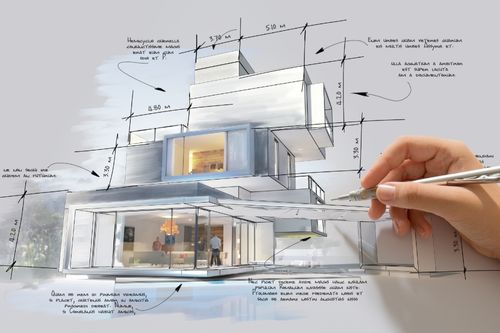The Creative Process Behind Effective Tasks from CDA Architects
The Creative Process Behind Effective Tasks from CDA Architects
Blog Article
A Thorough Overview of Building Designs and Their Influence on Modern City Planning and Advancement
Building designs have actually long acted as a mirror to the societal values and technological improvements of their time, playing a crucial role fit contemporary city preparation and growth. From the majesty of Neoclassicism to the practical strategy of Brutalism, each design has actually introduced distinct ideas that influence urban appearances and capability. As modern obstacles arise, including sustainability and area demands, recognizing these historic frameworks ends up being crucial. The resulting dialogue not only informs future layout techniques however additionally elevates significant inquiries concerning the balance in between heritage and development in our developing urban landscapes.
Historic Overview of Architectural Styles

As cultures transitioned via the Center Ages, Gothic design emerged, identified by its verticality and detailed describing, matching the spiritual ambitions of the era. The Renaissance noted a rebirth of classic ideals, combining art and style in cutting-edge methods that influenced succeeding designs across Europe.

Today, architectural designs proceed to develop, driven by globalization and sustainability problems, reflecting a dynamic interaction between heritage and technology. This historical introduction emphasizes the importance of style as a mirror of social evolution and as a stimulant for urban advancement.
Trick Architectural Styles Explained
The diversity of architectural designs mirrors the myriad influences that form our developed environment, each embodying unique attributes and social values. Key building designs include Classic, Gothic, Baroque, Innovation, and Postmodernism, each standing for one-of-a-kind historical contexts and aesthetic approaches.
Classic style, rooted in old Greece and Rome, stresses proportion, percentage, and the use of columns (cda architects). On the other hand, Gothic architecture, thriving between Ages, is defined by sharp arches, ribbed safes, and flying buttresses, creating an angelic high quality in basilicas. Baroque architecture, emerging in the 17th century, is noted by magnificence, sophisticated embellishment, and a vibrant interplay of light and shadow
Modernism, which gained momentum in the early 20th century, prioritizes feature over kind, making use of brand-new materials like steel and glass to produce minimalist structures. Postmodernism, responding versus the austerity of Innovation, accepts eclecticism and historical reference, typically including spirited components and paradox.

Influence On Urban Planning
In forming the growth of cities, architectural designs dramatically affect city preparation choices. The option of building design often dictates the looks, capability, and overall character of urban environments.
In addition, architectural styles can influence zoning laws and land make use of plans. Urban organizers have to take into consideration the prevailing building fads when making districts, guaranteeing that new growths integrate with existing frameworks. This factor to consider fosters cohesive urban landscapes and enhances community identity.
The execution of particular architectural styles can additionally affect socioeconomic variables within a city. Premium modern designs may attract wealthy locals and businesses, leading to gentrification, while much more cost effective real estate solutions may prioritize functional and lasting layouts to fit diverse populations. cda architects. Inevitably, the interplay between architectural designs and metropolitan preparation produces dynamic cities that show both historical context and modern requirements, forming the lived experiences of their inhabitants
Sustainability and Modern Architecture
Building styles play a pivotal role in addressing contemporary obstacles, specifically in the realm of sustainability. As city areas increase and ecological concerns heighten, modern design increasingly welcomes sustainable style concepts that focus on energy efficiency, resource preservation, and marginal environmental effect.
Contemporary architectural activities, such as biophilic layout and eco-friendly design, advocate for frameworks that harmonize with their surroundings, utilizing natural products and advertising biodiversity. These styles often incorporate have a peek at this site eco-friendly energy sources, such as photovoltaic panels and wind turbines, to reduce reliance on nonrenewable fuel sources and reduced carbon footprints.
Moreover, the click here for info assimilation of advanced innovations, such as smart structure systems, enhances power administration, optimizing resource use while ensuring passenger comfort. Ingenious water administration strategies, including rainwater harvesting and greywater recycling, further add to lasting urban environments.
Especially, sustainability expands beyond environmental worries; it incorporates social and economic dimensions. By cultivating area health and promoting inclusivity, modern-day architectural designs align with lasting advancement goals. As a result, the development of building methods remains to shape durable cities that not just satisfy the demands of today yet likewise secure the future for generations to come.
Community Engagement in Layout
Community involvement in layout serves as a crucial bridge in between architects and the populations they serve, making certain that the developed setting shows the requirements and desires of its individuals. This collaborative process welcomes neighborhood participants to contribute their insights and choices, fostering a feeling of possession and responsibility towards the rooms they occupy.
Reliable community involvement employs numerous techniques, such as workshops, studies, and public discussion forums, to collect diverse perspectives. These methods promote a two-way dialogue, allowing engineers to comprehend regional contexts while equipping locals to articulate their problems and wishes. This inclusivity not just boosts the style quality but likewise promotes social visit equity by dealing with the unique obstacles faced by marginalized teams.
Moreover, community involvement can bring about ingenious solutions that may not emerge in a traditional style procedure. By incorporating neighborhood expertise and social values, engineers can create areas that resonate even more deeply with users, enhancing use and sustainability. Ultimately, focusing on neighborhood engagement in design processes leads to settings that support social communications, support well-being, and reinforce community ties, therefore playing a pivotal function fit modern city landscapes.
Final Thought
Architectural styles have greatly affected modern-day city preparation and growth, mirroring evolving cultural and technological contexts. As cities continue to expand and adapt, the continuous discussion in between building heritage and modern layout concepts will certainly continue to be essential in creating comprehensive, vibrant areas that boost quality of life and advertise social equity.
Report this page